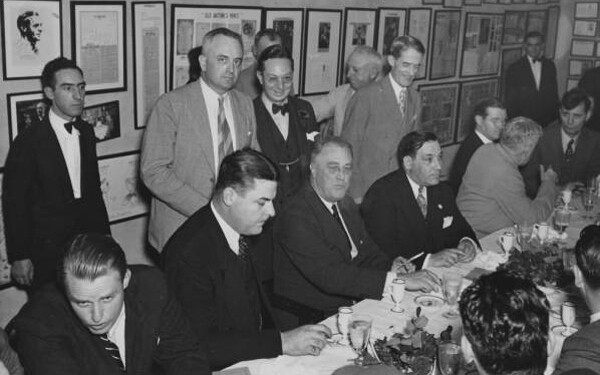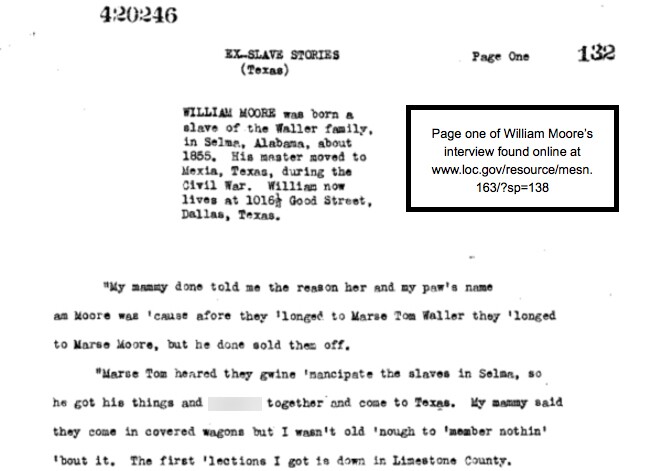African American slave stories are not something we like to remember. The heart-wrenching and disturbing acts of slavery are a stain that won’t soon go away. However, in reading the stories of these formerly enslaved men and women, you will find amazing courage, faithfulness, a love of family, strength through adversity, and much more.
The WPA Begins to Preserve African American Slave Stories
Under the establishment of the New Deal in1933, President Franklin D. Roosevelt instituted a series of projects and programs in hope of stabilizing the economy and providing jobs to citizens. One such program was the Works Progress Administration, better known as the WPA. Under the WPA was the WPA Arts Projects, which included the Writer’s Project. The purpose of the Writer’s Project was to collect stories of America’s past, including interviews. The project later expanded to include narratives from formerly enslaved men and women in the United States.

African American Slave Stories: From Their Own Mouths
Interviews were conducted in several states. You can see a full list of the states that participated and how many interviews were collected from each on the Library of Congress Website.
True to their language, the transcribed interviews reflect the dialect and style of speech of their subjects. Stories include the sadness,the triumphs, the escapes, the occasional happy memory, and a great deal of family history information.
African American Slave Stories Include Family History Information
In the interview transcript pictured above, William Moore of Dallas, Texas, shared the reason his last name was Moore. This example is just the beginning of the valuable information you will find shared in these African American narratives.
Many times, the people being interviewed shared these kinds of information:
- When they were born.
- Where they were born.
- Parents’, siblings’, and spouses’ names.
- Their escape or freedom story.
- What they were doing at the time of the interview.
- Where they were living at the time of the interview.
Christmas Time: A Portion of the Cinte Lewis Narrative

Though the majority of these narratives share the horrors of living an enslaved life, some interviewees shared happy family memories.
San Jacinte Lewis, called Cinte, related the following story regarding Christmastime while being enslaved:
“Come Christmas time old marse [master] sometimes give us two-bits and lots of extra eats. Iffen it come Monday, we has de [the] week off. But we has to watch the eats, cause [slaves whose] marsters [masters] don’t give ’em no Christmas sneak over and eat it all up. Sometimes we have dances, and I’d play de fiddle for white folks and cullud [colored] folks both. I’d play, ‘Young Girl, Old Girl,’‘High Heel Shoes,’ and ‘Calice Stockings.’” (Read San Jacinte Lewis’ full interview.)
The full collection of African American interviews created by the WPA is deeply moving and may help you piece together your family tree.
Finding Slave Stories Online

Search engines such as Google Books are always great places to search for historical information, especially about your ancestors. By using search terms such as enslaved African Americans who escaped, it’s possible to find books that can give you more information on formerly enslaved men and women who escaped from slaveholders in America to freedom in Canada.
One such book is A North-side View of Slavery: The Refugee: Or the Narratives of Fugitive Slaves in Canada, by Benjamin Drew. It was published in 1856 and gives a firsthand account of many daring stories of escape.
One account included in the book is the story of James Adams. James made his escape from Virginia on August 12, 1824, and arrived in St. Catharines, Canada, on September 13, 1824. Frequently, he had to trust strangers, even though there was a bounty on him, to help him navigate the trip.
Add the Stories of Your Enslaved Ancestors
It’s heartbreaking to read stories of the abuse enslaved people went through, especially if those people are your own ancestors. However, their stories are important pieces of both national and family history and can help you connect with even more of your ancestors.
If you find the slavery stories of ancestors, you can add them to their sources on FamilySearch. If you have family stories not included in other records, try adding them to the ancestor’s Memories on FamilySearch. By recording the stories of your ancestors, you can provide insight and inspiration for generations to come.
Discover More about Your African American Heritage
At FamilySearch, we care about connecting you with your family, and we provide fun discovery experiences and family history services for free. Why? Because we cherish families and believe that connecting generations can improve our lives now and forever. We are a nonprofit organization sponsored by The Church of Jesus Christ of Latter-day Saints. To learn more about our beliefs, click here.





